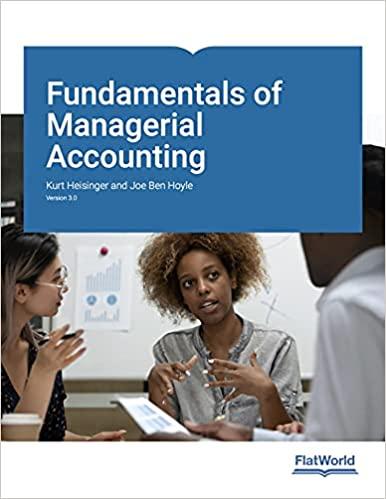Question
Fred Ltd. is medium sized private company owned by the Uptron family based in Moncton, NB. Times have been difficult for this industry in the
Fred Ltd. is medium sized private company owned by the Uptron family based in Moncton, NB. Times have been difficult for this industry in the last decade with the collapse of the US housing market, the strong Canadian dollar and a general financial recession, to name a few. Fred Ltd has seen a strong drop in demand and is doing its best to survive. It currently prepares its financial statements in accordance with ASPE. However, in recession times, it increasingly needs to compete with larger public companies for resources and revenues. With the forestry industry requiring significant supply chain management from planting seeds to final product, the company leans on credit and debt during the lean months. Under pressure from the market and the bank, the company now plans to move to IFRS from the next financial year.
Fred Ltd. reported the following preliminary Year 5 financial statements in compliance with ASPE.
Net Income - $1,150,000
Total Debt - $650,000
Total Shareholders equity - $ 500,000
The controller at Fred Ltd has identified 6 potential areas under which the companys accounting policies could have differences between ASPE and IFRS.
Fred Inc. incurred research and development costs of $45,000 in year 4. 30% of these costs are connected to developmental activities that met the criteria for capitalization as an intangible asset. The newly developed technology was introduced to the market in January, Year 5 and is expected to generate sales revenue for 15 years.
One of Freds debtors has fallen on hard times and is unable to pay back the $120,000 it owed the company. Upon negotiation, Fred has agreed to accept 5 annual payments of $30,000, with the first installment due at December 31, year 6 as a full settlement of the loan. The original interest rate was 12% and the current market rate of interest for this type of loan in 10%. No adjustment has been made for the impairment of the loan receivable.
Fred owns many production technology patents. These are depreciated over their useful life, ranging from five to ten years. The patents are checked for impairment when there is an indication that impairment may exist. Relevant values of patents are given below.
| December 31, Year 4 | December 31, Year 5 | |
| Carrying amount before impairment | 30,000 | 25,000 |
| Undiscounted future cash flows | 35,000 | 27,000 |
| Present value of expected future cash flows | 28,500 | 20,000 |
| Net realizable value | 28,000 | 18,000 |
Fred Ltd has issued bonds for processed of $60,000 on December 31, year 5. The bonds are convertible into common shares at any time during the next five years. The bonds would have been worth only for $54,000 if they did not have the conversion feature. The proceeds on the bonds have been recognized as long-term debt in the preliminary financial statements.
Fred Ltd. issued redeemable preferred shares to two of the original founders of the company in Year 4 in exchange for their previously held common shares as a tax planning arrangement. The preferred shares have been assigned a value of $16,000 and have been reported in the shareholders equity in the preliminary financial statements. The preferred shares would have been classified as long term debt under IFRS and would need to be reported at their redemption value of $75,000.
Fred Ltd bought machinery at the beginning of Year 3 at a cost of $55,000. The equipment has an estimated useful life of 10 years, an estimated residual value of $5,000 and is being depreciated on a straight line basis. At the beginning of Year-5 it was upraised and determined to have a fair value of $48,000. Its estimated useful life and residual value does not change. The company could adopt the revaluation option in IAS16 to periodically revalue the machinery at fair value subsequent to acquisition.
Required
Where accounting choices exist, choose policies that minimize return on total Shareholders equity under ASPE and maximize return on total Shareholders equity under IFRS. Connect each of the items to the relevant accounting standard and provide an explanation of the differences between ASPE and IFRS.
Prepare a schedule to convert net income and total shareholders equity from the preliminary statement amounts to amounts under ASPE and IFRS (You are NOT reconciling from ASPE to IFRS). Provide the connected calculations and working on each of the items you put into the schedule.
Calculate the ROE and Debt to Equity Ratios first using ASPE and then IFRS.
Prepare a schedule showing any adjustments to the numerator and denominator for these ratios.
Explain if Fred Ltd.s solvency and profitability look better or worse under IFRS after considering the combined impact of the six areas of difference.
Instructions:
Ignore Income taxes
Clearly state any assumptions and choices you make, any accounting standards you interpret, while making your decisions and calculations.
Step by Step Solution
There are 3 Steps involved in it
Step: 1

Get Instant Access to Expert-Tailored Solutions
See step-by-step solutions with expert insights and AI powered tools for academic success
Step: 2

Step: 3

Ace Your Homework with AI
Get the answers you need in no time with our AI-driven, step-by-step assistance
Get Started


